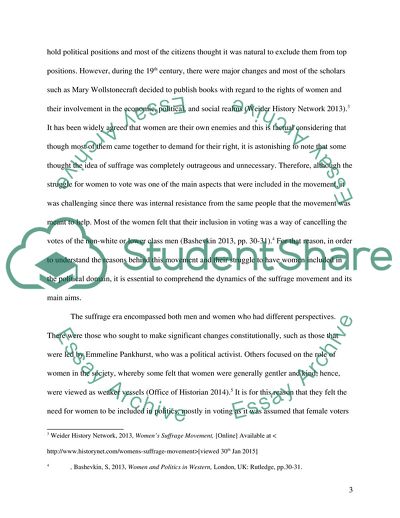Cite this document
(The Struggle for the Vote was one Aspect of Womens Movement Essay Example | Topics and Well Written Essays - 2000 words, n.d.)
The Struggle for the Vote was one Aspect of Womens Movement Essay Example | Topics and Well Written Essays - 2000 words. https://studentshare.org/history/1857771-the-struggle-for-the-vote-was-merely-one-aspect-of-a-wider-womens-movement-discuss
The Struggle for the Vote was one Aspect of Womens Movement Essay Example | Topics and Well Written Essays - 2000 words. https://studentshare.org/history/1857771-the-struggle-for-the-vote-was-merely-one-aspect-of-a-wider-womens-movement-discuss
(The Struggle for the Vote Was One Aspect of Womens Movement Essay Example | Topics and Well Written Essays - 2000 Words)
The Struggle for the Vote Was One Aspect of Womens Movement Essay Example | Topics and Well Written Essays - 2000 Words. https://studentshare.org/history/1857771-the-struggle-for-the-vote-was-merely-one-aspect-of-a-wider-womens-movement-discuss.
The Struggle for the Vote Was One Aspect of Womens Movement Essay Example | Topics and Well Written Essays - 2000 Words. https://studentshare.org/history/1857771-the-struggle-for-the-vote-was-merely-one-aspect-of-a-wider-womens-movement-discuss.
“The Struggle for the Vote Was One Aspect of Womens Movement Essay Example | Topics and Well Written Essays - 2000 Words”. https://studentshare.org/history/1857771-the-struggle-for-the-vote-was-merely-one-aspect-of-a-wider-womens-movement-discuss.


